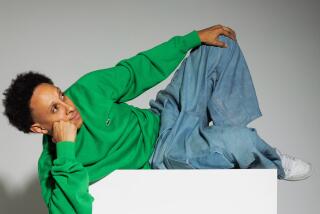âCrazy Ex-Girlfriendâ ends soon, but first, Aline Brosh McKenna has a few things to say
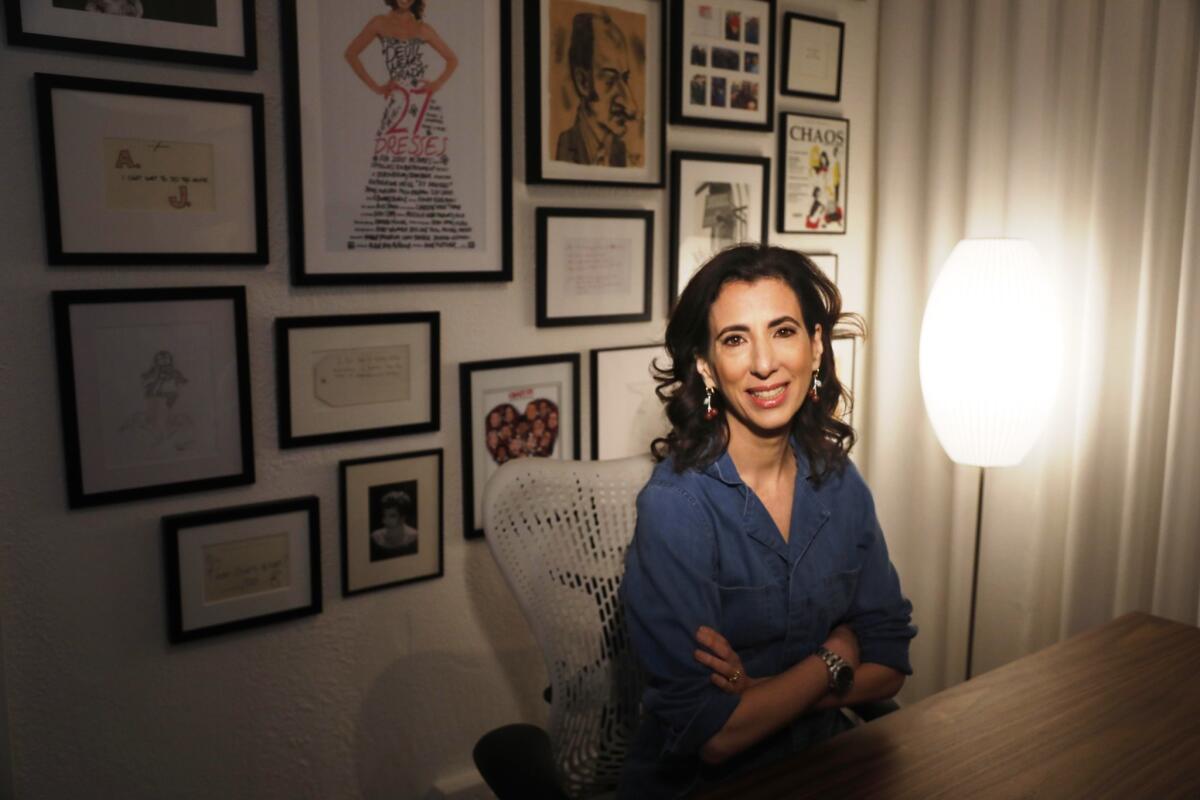
In this series, Running the Show, The Times speaks with showrunners of your favorite TV programs about breaking into Hollywood, being the boss and more challenges of the job.
Aline Brosh McKenna canât let it go. She admits that.
Which is why, next month, when her CW series âCrazy Ex-Girlfriendâ comes to a close after four seasons, it will be no ordinary send-off â because, come on, is anything ever ordinary with this show?
The swan song finale April 5 will be boosted by a concert special, airing immediately after the last episode of the musical dramedy. Thereâs also a documentary about the finale in the works that will be available on the CW Seed app. McKenna, co-creator and showrunner of the cult favorite, is in the midst of cutting footage for both bonus offerings. It caps off the already rigorous task of writing the series finale, which McKenna did with fellow co-creator and star Rachel Bloom, and directing the episode too. So, basically, overwhelming panic was inevitable.
âI donât know what we were thinking,â McKenna, 51, says. âRachel and I are still working around the clock. Weâre insane. I donât know why we did this to ourselves ⊠clearly, we couldnât let this show go.â
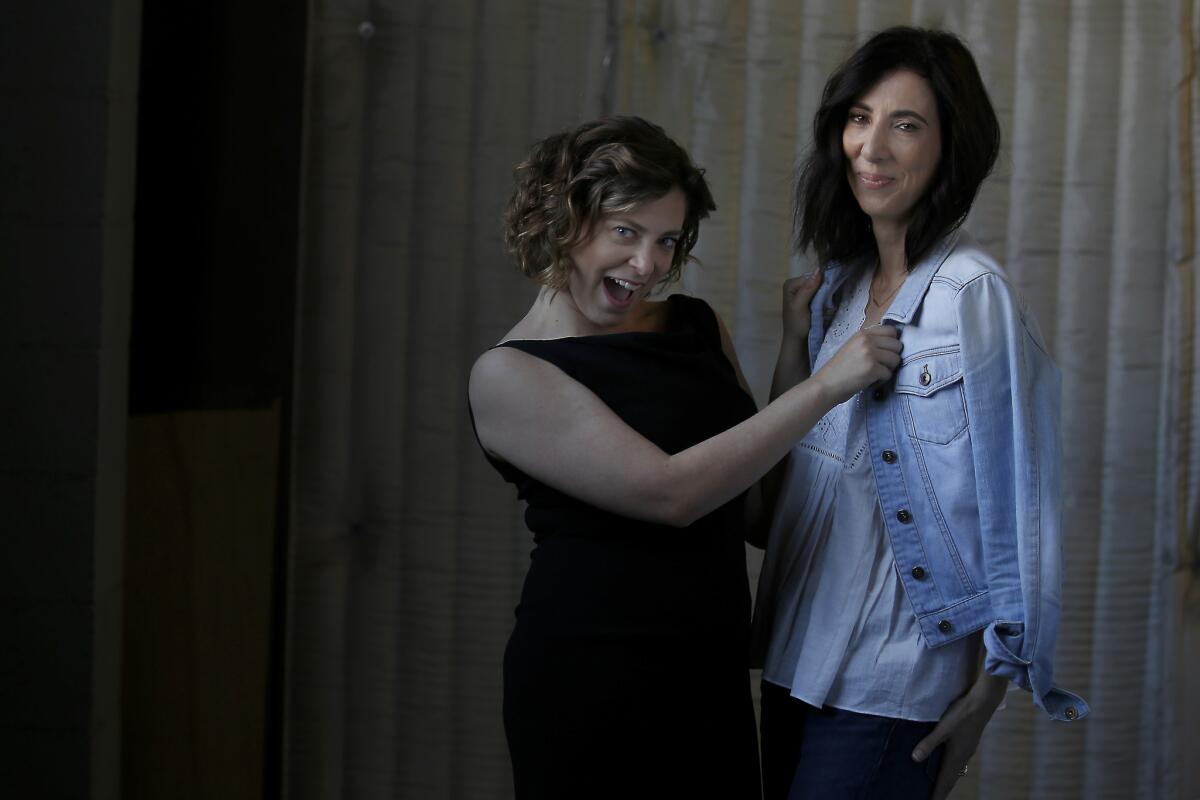
Now, movie executives have that sad, dead-eyed stare of having to move corporate product through and TV executives have this the skyâs the limit feel.
— âCrazy Ex-Girlfriendâ showrunner Aline Brosh McKenna
Considered by many to be an anti-romantic comedy, the show has followed the shenanigans of Rebecca Bunch (Bloom) in the pursuit of love and happiness. Along the way, the show has skewered the clichĂ©s often put upon women and has offered a sobering exploration of mental health â all while breaking into song every so often. After a particularly dark third season, which included Rebecca plotting revenge on her ex and a suicide attempt, the final chapter has taken on a lighter tone in looking at Rebeccaâs journey toward happiness in a healthy way.
For McKenna, whose screenwriting work has largely been focused in film, including âThe Devil Wears Prada,â â27 Dressesâ and âMorning Glory,â the end of âCrazy Ex-Girlfriendâ is a significant marker in her career. It brings to a close her first TV series â a full circle moment for someone who spent her early years in Hollywood writing TV pilots.
With the office she used for four years on the âCrazy Exâ set in North Hollywood already boxed up, McKenna has been using her other office in L.A.âs Larchmont Village during the weeks leading up to the showâs farewell. There, amid framed photos of Nora Ephron and Joni Mitchell and a mock-up of Runway magazine ever-so-neatly on display, just as âDevil Wears Pradaâ editor Miranda Priestly would demand, McKenna talked about wrapping up the show, how her job has changed in the #MeToo era and about writing for TV at a time when content feels overwhelming.
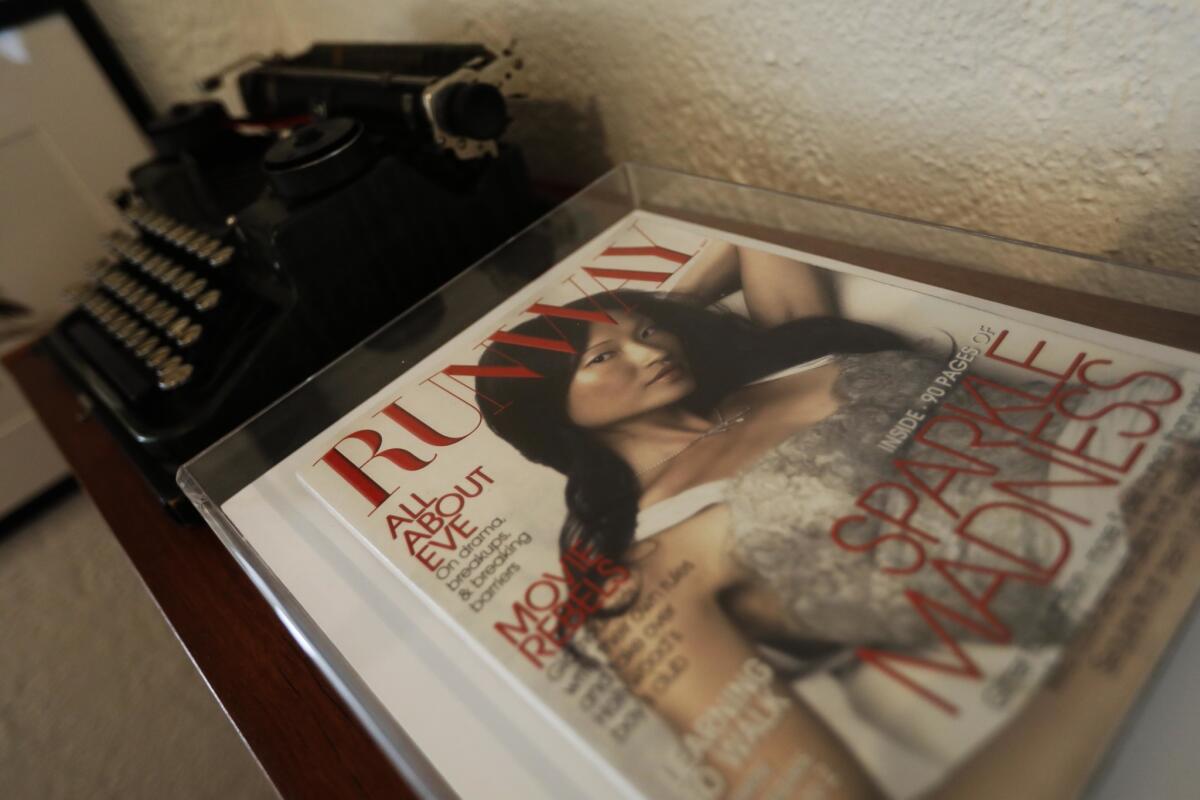
It all started when ...
After college, I wrote a proposal for a book with my roommate, and we sold it to Pocketbooks. And, then, I tried in vain to become a magazine writer. I really wanted to be, not quite as much of a journalist, but sort of in the world of âDevil Wears Prada.â I wanted to write for New York Woman, which was a big magazine at the time. We tried to write for Spy. We had a piece killed at Glamour. We tried really hard. And then my writing partner moved to L.A. She got a job on âMarried With Children.â
I wrote a screenplay in a screenwriting class, an extension class at [New York University]. And with that screenplay, I got an agent. I was about 23 or something like that. That was actually a blind deal that I got from a producer at Universal that didnât turn into anything. And then the original spec sold to New Regency. Those two deals were the things that sustained me for the first few years of my career. I was just expecting to work as a writer. That was the extent of my goals. Youâre sort of swinging from vine to vine trying to keep everything going ⊠And I worked in TV for five years. I wrote pilots mainly.
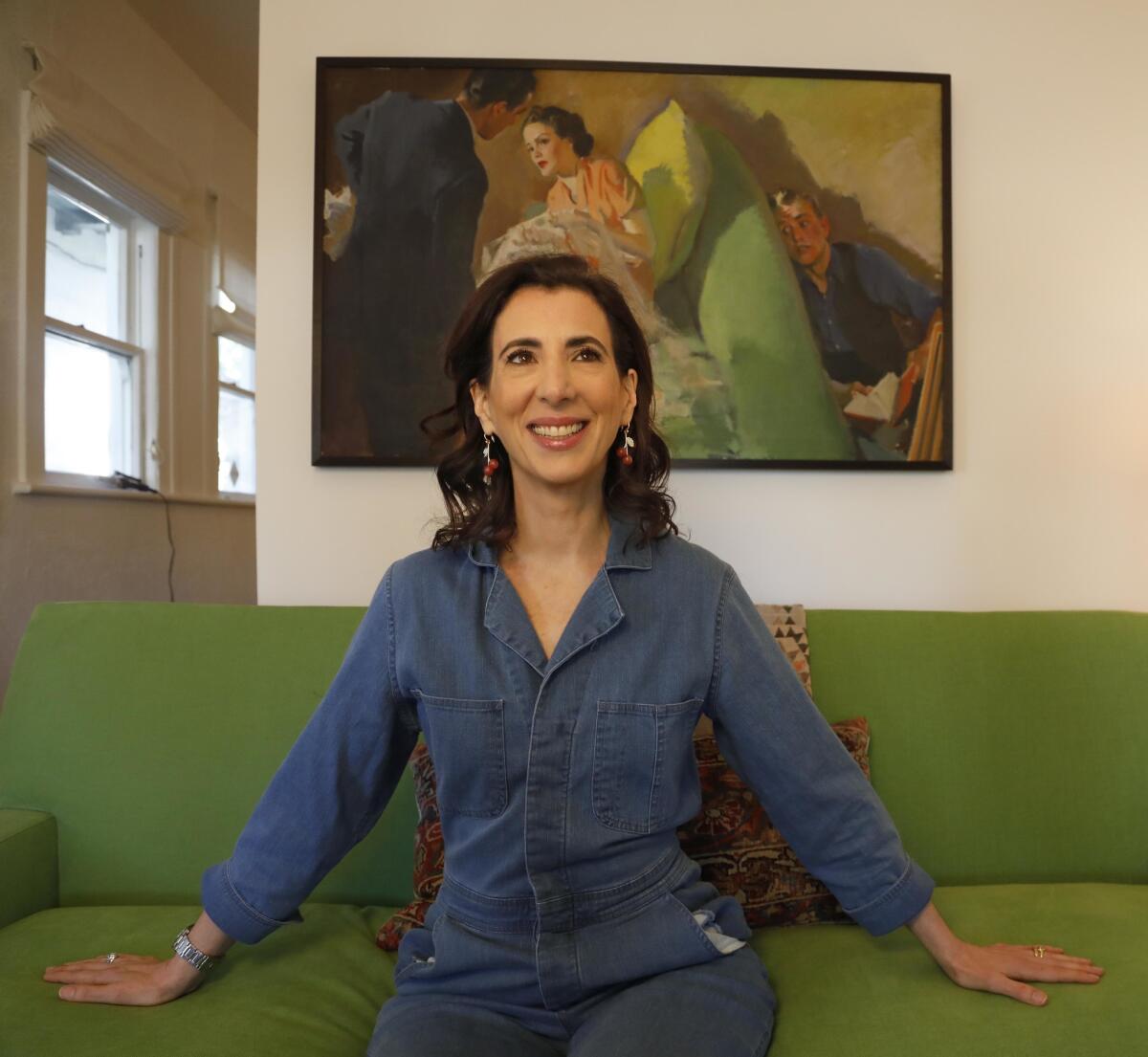
TV was very different then. Everybody wanted the same thing and it was very constrained. And the multi-cam format was never the format that I was most comfortable in. I did that for a while, but I felt like there wasnât a lot of freedom, and, then, they are saying to you, âYou need to have three jokes a page.â
I think I stopped writing TV when I was pregnant with my son, so I was about 30, and then, I got the job writing âDevil Wears Pradaâ six or seven years later.
I had two other movies made, âThree to Tangoâ and âLaws of Attraction.â But at the time, movies were doing more character-driven pieces, and then, it completely flipped. It really completely flipped, and now, movie executives have that sad, dead-eyed stare of having to move corporate product through and TV executives have this the skyâs the limit feel about them.
On her first IMDb TV credit â Margaret Choâs âAll-American Girlâ
After a few years of writing movies, I got a TV writing partner, this really hilarious gentleman named Jeff Kahn, who was on âThe Ben Stiller Show,â which was on MTV and later Fox. We wrote a bunch of pilots together, and one of those pilots was called âYoung Americans.â When Margaretâs show looked like they werenât going to renew it, they took one of our pilots, and they made it the last episode of âAll-American Girl.â It was a planted spinoff where Margaret moves in with a bunch of ⊠we had written sort of âFriendsâ without money. Thatâs the episode. Margaret was in it. Amy Hill was in it as Margaretâs grandmother. Diedrich Bader was in it. Mariska Hargitay was in it. David Cross. But it didnât get picked up.
On learning to be a showrunner
By the time we got [âCrazy Ex-Girlfriendâ], I knew a lot of people who were running shows. Everybody does it differently, so I kind of crowdsourced it and called a bunch of different people. I will say that Jennie Snyder Urman [âJane the Virginâ] was working at the CW and that was one of the reasons that we went to the CW to begin with. She was very helpful and gave me a lot of good advice. I [also] solicited a lot of feedback from the writers we hired. We had a retreat right in the beginning and I said, âTell me the best practices and the worst practices of your previous jobsâ âŠ
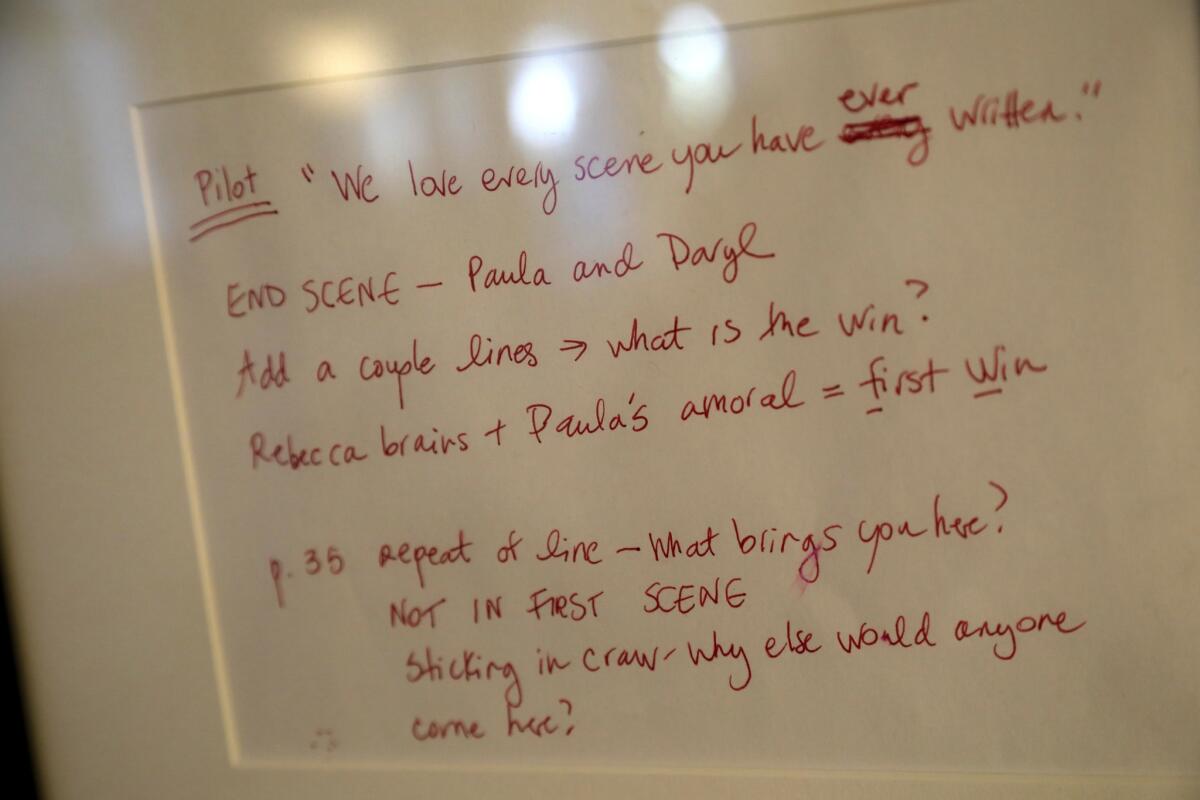
ALSO: âCrazy Ex-Girlfriendâ: Putting West Covina on the culture map »
I had to learn that every person you work with requires a slightly different style of communication. If you think about, with your five closest friends, you have a slightly different communication with each. Like, âThis one, I text with, and this one, I call, and this one, itâs best to hang out with them in person.â And so, you know, we had the same writers and the same department heads and the same people, and we all got better at knowing. like, âOK, this is a quick phone call; this is a quick text; this is a quick in-person visit; this is Steven from production coming down with pictures; and this is, you know, having a meeting with the prop manager.â
Meeting people where they live was something that I think I maybe intellectually understood, but when you see it in practice and you notice that ... Itâs sort of like with kids. You take them as they are as opposed to trying to get everybody to be on your wavelength.
On writing in the Peak TV era
Looking at the ratings, for us, is really pointless. We realized early on that no oneâs going to watch the show in any substantial numbers live on network television. So we gave up on that. I would say Rachel and I check that, but very early on, we knew that if they were going to leave us on the air, itâs not going to be for the ratings.
Thereâs no end of amazing quality things going on in television â just recently with âRussian Dollâ and the final season of âCatastrophe.â The stuff is good because writers are in charge, and writers know stories better than anybody else. And so, what writer doesnât want to go somewhere where the writers are in charge?
Thereâs a reason you know who David Chase is, and thereâs a reason that you know who Lena Dunham and Jenni Konner are. And thereâs a reason you know who Mike Schur is â because they have a point of view and itâs sort of like waiting for the latest whatever novel to come out. That has been the biggest change in TV, I think. And I love it.
ALSO: So, that time jump on âCrazy Ex-Girlfriendâ? Let the writers explain ⊠»
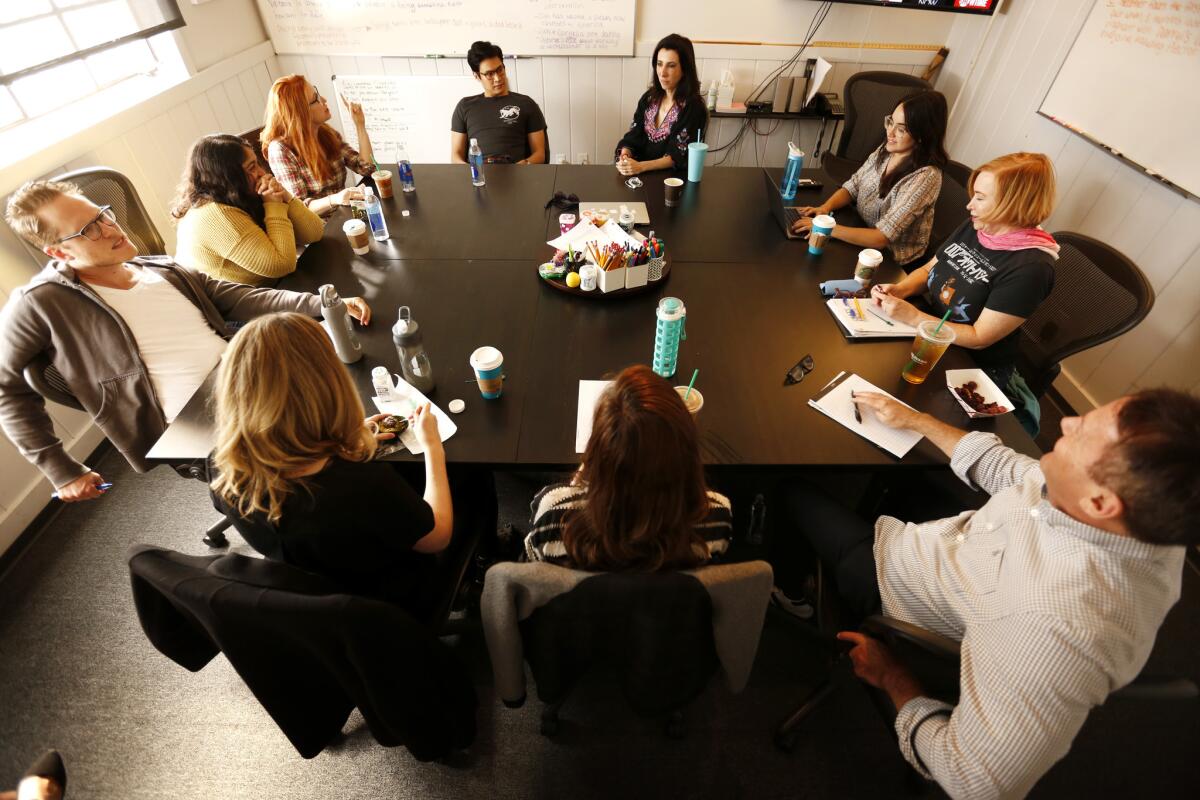
On being conscious of her role in creating an inclusive workplace
I think thatâs present in my everyday brain. One thing that I do frequently is I ask people to challenge the way they look at themselves. So like we have a female editor that I really encouraged to be a director and, [Kathryn Burns], our choreographer, I really encouraged to be a director. And sometimes, you know, people can opt not to do those things, but sometimes just someone seeing you that way and suggesting that makes people think of themselves in a slightly different way.
I remember Rachel said to me once, âWhy are you so nice to me? Why are you mentoring me?â I was mentored and taken care of by a lot of people when I started. Having someone identify, âHey, you did a good job here,â or, âI see something in youâ â just the slightest little thing is so meaningful when youâre starting. And so I mostly try and be aware of being encouraging when I see something that maybe someone is not seeing in themselves.
ALSO: Introducing âCrazy Ex-Girlfriend,â in which Rachel Bloom stalks and bursts into song »
Changing the rom-com narrative
I had been so steeped in being likable and the female leads being a certain way â that had been hammered onto me. I will say, on âDevil Wears Prada,â that was the process where that happened the least. Besides [director] Dave [Frankel], it was a movie made primarily by women. And so I got fewer of those notes. Andy [Anne Hathaway] was brainy and she was a little snobby and she was opinionated, and I think thatâs partly because the book existed. So that helped a lot. But also because it was a movie surrounded by women.
And then with âCrazy Ex,â I think one of the things that really connected Rachel and I was a desire to get underneath stereotypes. She comes from musical comedy where the female characters are often severely compromised. And I had been working in romantic comedies, where I was trying to get these other kinds of characters through. And this was a brilliant opportunity for both of us to kind of spoof these things.

Get an inside look at the work that goes into a musical number on the CWâs musical comedy âCrazy Ex-Girlfriend.â
ALSO: A midnight bath and the making of âCrazy Ex-Girlfriendâsâ big Marilyn Monroe parody »
So from the beginning, weâd been making fun of makeovers and runs to the airport. And then all the men are tropes. And so it really is a sustained, four-year-long rom-com. I would say the main genres we dismantled [were] mainly romantic comedy, but also musical comedy, for sure.
Rebecca Bunch is a studio executiveâs nightmare of a romantic comedy female lead, and that was highly intentional because itâs a character whoâs been fed that crap. What does that look like when youâre actually trying to manifest those rom-coms into being? That is maybe the biggest difference between Rachel Bloom and Rebecca Bunch, which is that Rachel is steeped in musicals. Rebecca Bunch is steeped in rom-coms, mostly.
How the job has changed in the #MeToo era
The way I think about my job and this industry ... I think that thereâs so much more openness in terms of what weâre talking about, what the conversations are, and that has dovetailed nicely with what weâre doing on the show. It is nice to feel like weâre all sort of engaging in some of the conversations about things we maybe knew, but didnât say. And so that feels great. That new openness that, I think, has brought a lot to everyoneâs creative expression, feeling like some of those sort of unspoken dynamics, not just in Hollywood, but in the world, are being openly discussed now.
It certainly came up a lot in our free-form discussions. I think anyone in Hollywood spent a lot of time discussing it, and a lot of the women in our show, in particular. I would describe everyone on our show as feminist; particularly, some of the women are quite outspoken.
It was also one of those things we had been talking about and dealing with in our own way, before it all started to really break, because we were dealing with certain of these issues we were already talking about. But, yeah, I think that sound you hear is everyone all across Hollywood talking about all of these things.
Crafting a series finale
Because Rachel and I were so interested in beginning, middle, and end, it was really nice for us to get to that end and explore what that was. Some of the other [season] finales weâve done have been bigger, more bombastic, and had more scale to them. I mean, people are running off cliffs in Malibu. And we always knew [the series finale] was going to be a more intimate, psychological.
Itâs the first one we shot in seven days, which is our normal shoot time. We usually do the finales over a longer period of time. But this one, we knew was going to be more inside Rebeccaâs mind, and so thatâs very much how itâs structured.
Rachel and I wrote it together. We wrote the bulk of it in one day. And it felt like the culmination of almost six years of collaborating and talking about what we wanted to say. We did have a big conversation with the writersâ room before we went to write, just to get their thoughts, because obviously the institutional memory there, after 60 episodes, is pretty amazing. But then we set out to sit together.
It was kind of like a dam bursting. And there were tons of refinements, but the spirit of the finale is in that first day that Rachel and I kind of first put it on the page.
Bonus: The showrunnerâs essential tool
A bowl of words. âWhen Iâve hit a wall or need to take a break from the screen, I flip the bowl â itâs these words that are printed on little cubes. And I make sentences.â
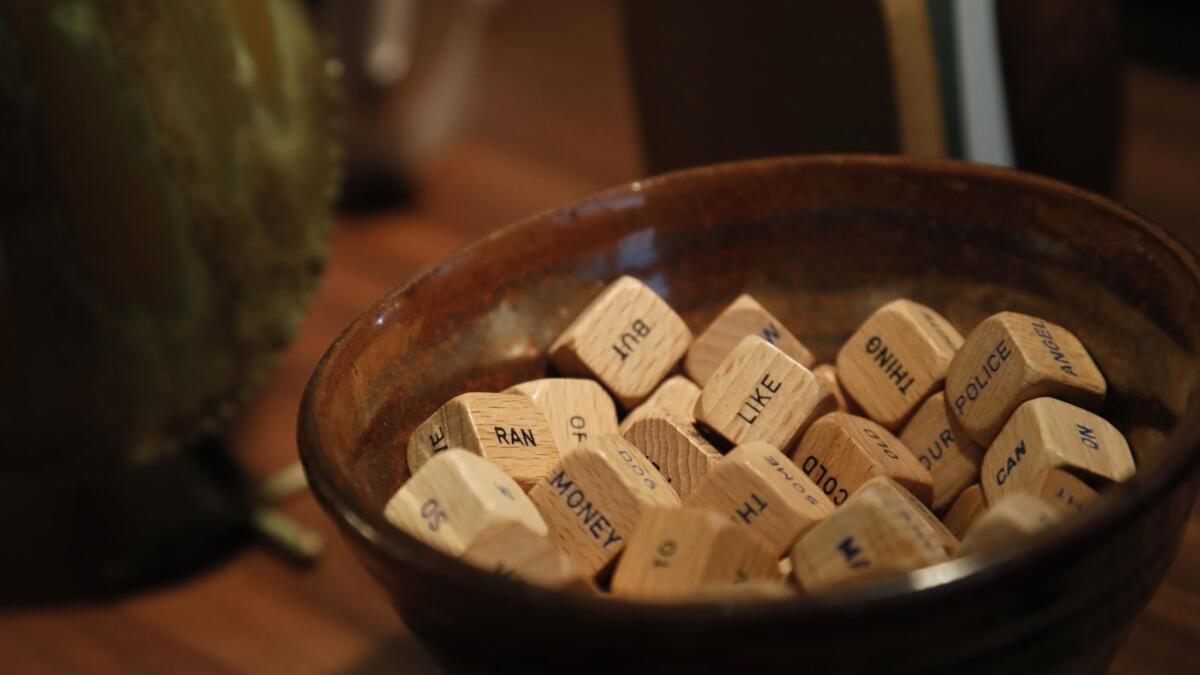
ALSO: 5 things to know about the final season of âCrazy Ex-Girlfriendâ »
ALSO: âCrazy Ex-Girlfriendâ goes from small screen to small stage at Covina theater »
ALSO: Shopping in Silver Lake with âCrazy Ex-Girlfriendâ star Rachel Bloom »
Twitter: @villarrealy
More to Read
The complete guide to home viewing
Get Screen Gab for everything about the TV shows and streaming movies everyoneâs talking about.
You may occasionally receive promotional content from the Los Angeles Times.


